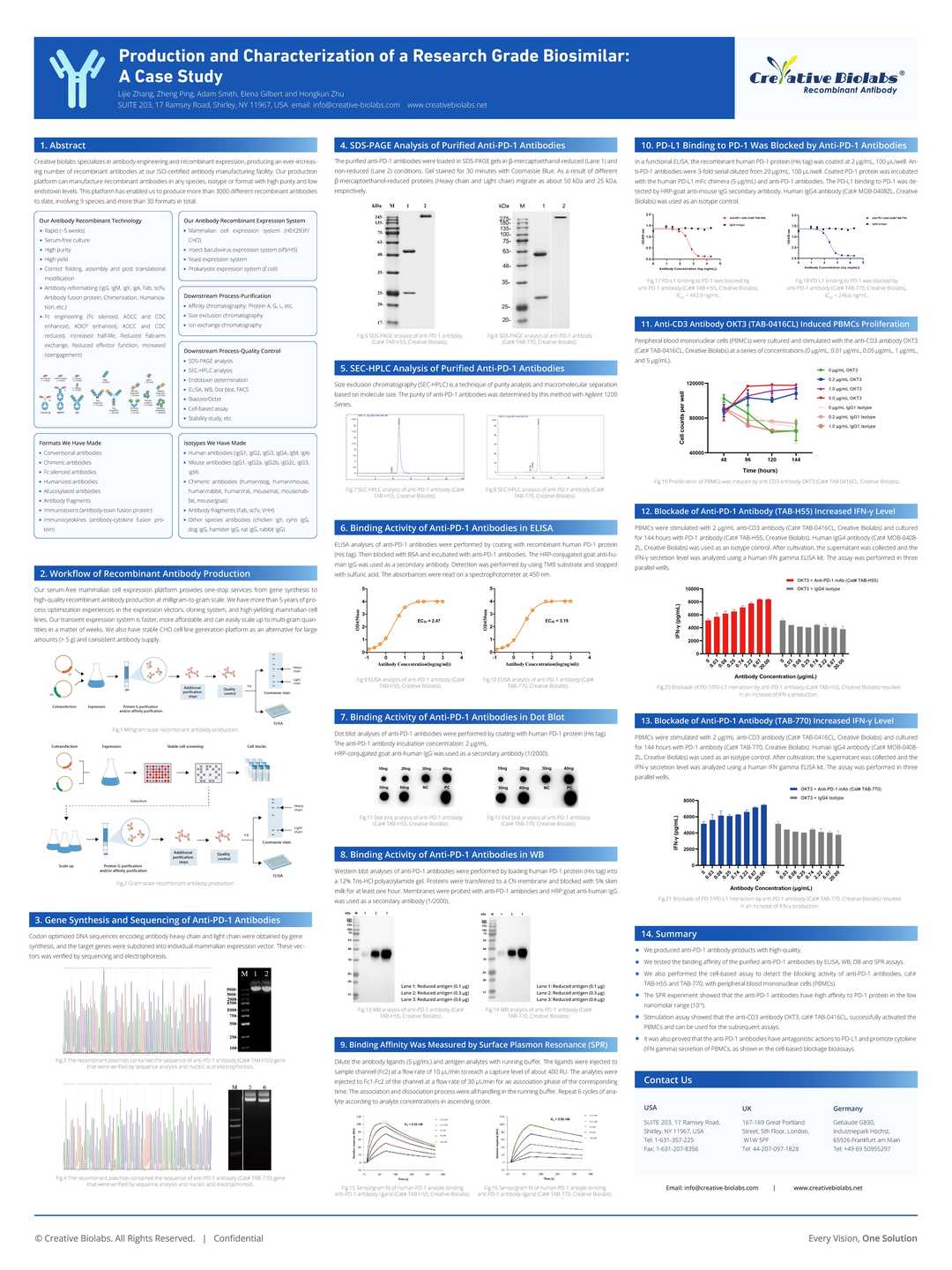Mouse Anti-SLC39A5 Recombinant Antibody (clone 2506W69)
CAT#: VS-0625-FY84
The Mouse IgG1 monoclonal antibody, clone 2506W69, is designed for specific detection of human SLC39A5. Immunized with a recombinant human SLC39A5 protein fragment, this antibody targets an antigen with an approximate size of 33 kDa. It is validated for Western Blot (1:2000 dilution) and Immunohistochemistry (Paraffin) (1:500 dilution), making it a valuable tool for research involving SLC39A5 expression and localization.
Specifications
- Immunogen
- A recombinant human SLC39A5 protein fragment (amino acids 48-178) expressed in E. coli.
- Host Species
- Mouse
- Type
- Mouse IgG1
- Species Reactivity
- Human
- Clone
- 2506W69
- Applications
- Western Blot, Immunohistochemistry-Paraffin
- Related Disease
- Myopia 24, Autosomal Dominant and Myopia
Product Property
- Purification
- Purified with Protein A or G affinity chromatography
- Purity
- >90% as determined by SDS-PAGE
- Concentration
- Please refer to the vial label for the specific concentration.
- Buffer
- PBS pH 7.3, 1% BSA, 50% glycerol
- Preservative
- 0.02% Sodium azide
- Storage
- Centrifuge briefly prior to opening vial. Store at +4°C short term (1-2 weeks). Aliquot and store at -20°C long term. Avoid repeated freeze/thaw cycles.
- Shipping
- Ice packs
Applications
- Application Notes
- Western Blot: 1:2000
Immunohistochemistry-Paraffin: 1:500
Optimal dilutions for assays should be determined by the user.
Target
- Alternative Names
- Solute Carrier Family 39 Member 5; Solute Carrier Family 39 (Metal Ion Transporter), Member 5; Solute Carrier Family 39 (Zinc Transporter), Member 5; Zrt- And Irt-Like Protein 5; ZIP5; Zinc Transporter ZIP5; LZT-Hs7; MYP24; ZIP-5
- Gene ID
- 283375
- UniProt ID
- Q6ZMH5
- Long Name
- Solute Carrier Family 39 Member 5
- Sequence Similarities
- Belongs to the ZIP transporter (TC 2.A.5) family.
- Cellular Localization
- Basolateral cell membrane; Multi-pass membrane protein {ECO:0000250 UniProtKB:Q9D856}
Note: Localized to the basolateral surfaces of enterocytes, pancreatic acinar and endoderm cells. During zinc deficiency diet, the basolateral cell membrane localization is lost in the intestine, the visceral yolk sac and acinar cell. During zinc repletion, is relocalized to the basolateral membrane of enterocytes, visceral endoderm cells and pancreatic acinar cells. Zinc can regulate the turnover of protein at the membrane. During zinc deficiency, is internalized and degraded in enterocytes, acinar cells and endoderm cells. Endocytosed through the endolysosomal degradation pathway RAB5A pathway
- Post Translation Modifications
- Methylated at His-375 by METTL9.
N-Glycosylated.
Glycosylation at Asn50, Ser135, and Asn160
Modification sites at PhosphoSitePlus
Glycosylation from GlyGen 6 sites, 3 N-linked glycans, 2 O-linked glycans
- Protein Refseq
- XP_005268860.1; XP_011536501.1; XP_011536502.1; XP_011536503.1; XP_047284669.1
- Function
- Uniporter that transports zinc(2+) into polarized cells of enterocytes, pancreatic acinar and endoderm cells across the basolateral membrane and participates, notably, in zinc excretion from the intestine by the uptake of zinc from the blood into the intestine (By similarity).
The transport mechanism is temperature- and concentration-dependent and saturable (By similarity).
In addition, is also a high affinity copper transporter in vitro (PubMed:36454509).
Also may regulate glucose-stimulated insulin secretion (GSIS) in islets primarily through the zinc-activated SIRT1-PPARGC1A axis (By similarity).
Could regulate the BMP/TGF-beta (bone morphogenetic protein/transforming growth factor-beta) signaling pathway and modulates extracellular matrix (ECM) proteins of the sclera
Customer Review
There are currently no Customer reviews or questions for VS-0625-FY84. Click the button above to contact us or submit your feedback about this product.
Submit Your Publication
Published with our product? Submit your paper and receive a 10% discount on your next order! Share your research to earn exclusive rewards.
Downloadable Resources
Download resources about recombinant antibody development and antibody engineering to boost your research.
Product Notes
This is a product of Creative Biolabs' Hi-Affi™ recombinant antibody portfolio, which has several benefits including:
• Increased sensitivity
• Confirmed specificity
• High repeatability
• Excellent batch-to-batch consistency
• Sustainable supply
• Animal-free production
See more details about Hi-Affi™ recombinant antibody benefits.
Datasheet
MSDS
COA
Certificate of Analysis LookupTo download a Certificate of Analysis, please enter a lot number in the search box below. Note: Certificate of Analysis not available for kit components.
Secondary Antibody
- CAT
- Product Name
Isotype Control
- CAT
- Product Name
Popular Products

Application: WB, IF, IP, Neut, FuncS, ELISA, FC

Application: IF, IP, Neut, FuncS, ELISA, FC, ICC

Application: ELISA, FC, IP, FuncS, IF, Neut, ICC

Application: FuncS, IF, Neut, ELISA, FC, IP, ICC

Application: FuncS, IF, Neut, ELISA, FC, IP, IHC

Application: FC, IP, ELISA, Neut, FuncS, IF, IHC

Application: WB, ELISA, IF

Application: WB, ELISA, FC, IHC, IF, IP

Application: ELISA, PD, Activ, PK, Stim
For research use only. Not intended for any clinical use. No products from Creative Biolabs may be resold, modified for resale or used to manufacture commercial products without prior written approval from Creative Biolabs.
This site is protected by reCAPTCHA and the Google Privacy Policy and Terms of Service apply.


















